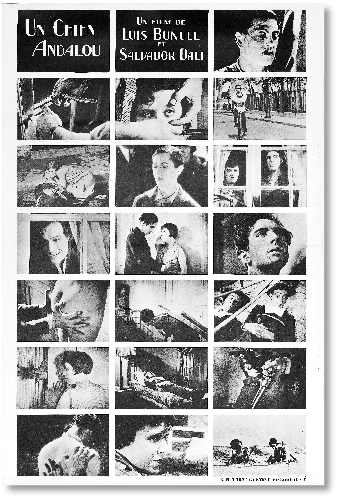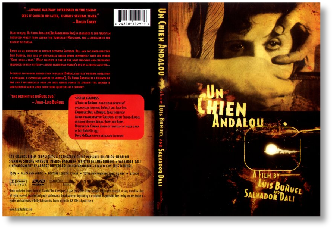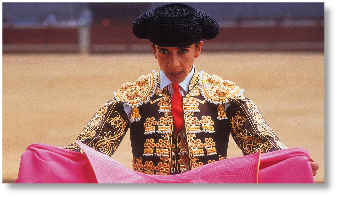T H E F I L M S T U D I E S W E B S I T E O F B E N T O N P A R K S C H O O L


What follows is merely a broad overview of the demands of the WJEC and the possible order of our coming to grips with it.
The syllabus is a new one for this students taking As.Of course the WJEC have the full spec on PDF and it can be down loaded from here. Students will find it most useful when clarifying exact word lengths and precise technical demands. We would hope to incorporate these fine details elsewhere on the site. This is all part of work in progress.....
AS LEVEL
Unit 1: FM1 (40%) Internal Assessment.
Exploring Film Form
• One analysis of how the micro aspects of a chosen extract from a film of
candidate's choice produce meanings and responses
(1500 words) (30)
• One creative project based on a film sequence or short film
(50: sequence or short film [40]/reflective analysis [10])
raw mark total: 80
Unit 2: FM2 (60%) External Assessment
2½ hours Written Paper
British and American Film
Three questions, one from each section:
Section A: Response to stimulus material set by Awarding Body based on
producers and audiences of film (40)
Section B: Topics in British Film (40)
Section C: US Film -
Paper raw mark total: 120
The aims of AS are:
(a) to develop students' interest in, appreciation and knowledge of film, specifically through studying
• the film -
and through studying
• the film's producers and audiences -
production and consumption of films, with particular reference to
Hollywood and British film; to provide students with a foundation in the analysis of film, together with subject specialist language, and to introduce them to creative and production skills.
Which is grand! and just as it should be...
The board set out the aims of the syllabus with admirable clarity below.
The highlightings are ours.
Advanced level specs
A LEVEL
Unit 3: FM3 25 % Internal Assessment
Film Research and Creative Projects
• a small-
• creative project (60 -
Paper raw mark total: 100
Unit 4: FM4 25 % External Assessment:
2 ¾ hour Written Paper
Varieties of Film Experience: Issues and Debates
Three questions, one from each section:
Section A: World Cinema topics (35)
Section B: Spectatorship topics (35)
Section C: Single Film -
Paper raw mark total: 100
FM3 Small-
Candidates will be required to carry out a small-
The project is designed to develop research skills.
It will be based on one focus film, making appropriate reference to at least two other related films.
Candidates will establish an area of investigation that relates the chosen
focus film to one of the following frameworks:
• star/performer
• genre
• auteur (in its broadest sense)
• social, political and cultural studies
• gender issues
• ethnicity
• institution
• technology
Candidates may not choose as a focus film any film they have specialised in
elsewhere in the specification.
The research project is completed in two parts:
• an annotated catalogue (approximately 10-
• a presentation script (approximately 1500 words)
Candidates should submit:
(a) a small-
(i) an annotated catalogue of key items of the candidate's research -
approximately 1000 words in total (15 marks)
The catalogue will contain approximately 10 to 15 items selected
from the candidate's total primary and secondary research.
Each catalogue item should be appropriately referenced and be accompanied by a brief note (approximately 70 words),
Which explains how the particular item is relevant to the area of investigation and what it contributes to the overall research.
The catalogue must conclude with a short paragraph which lists
significant items (e.g. between 3 and 5) not selected for inclusion in the catalogue, offering brief reasons why (up to 200 words).
(ii) a presentation script -
The presentation script must take the form of notes for a presentation
and could combine (for example)
subheadings, bullet points, short
pieces of connected prose and reference to visual extracts to illustrate the presentation.
Candidates are encouraged to devise a presentation format appropriate to their needs and may, for example, employ digital forms such as powerpoint.
Reference to key items of research from the catalogue must be made explicitly in the presentation.
Short credited quotations may be used
but care must be taken that the words of the presentation are the candidate's own.
Credited quotations are excluded from the wordcount.
Guidance from the Board.
Mr Gaffney’s ideas do not have to be followed slavishly,they are for guidance only. It is way more important to discuss matters and seek approval from Mrs Symons.
FM3 Small-
Freddie Gaffney, Principal Moderator
The small-
(i) an annotated catalogue (approximately 10 to 15 items) – 15 marks
(ii) a presentation script (1000 – 1500 words) – 25 marks
Please note:
(a) there is no longer any requirement for a separate evaluation.
(b) No commentary accompanies the catalogue (as was the case up to and including the 2006
examination series). The annotations replace the need for a commentary.
(c) Candidates may not choose as a focus film any films they have specialised in elsewhere in
the specification (i.e., either at AS or A2).
(d) There is a misprint on page 37 of Specification, relating to the total marks for FM3:
Level 1 mark range is '0-
2
What needs to be produced for the Small-
The Small-
With A Vengance as an example of an industrialised franchise) or stem from a topic-
concept (such as ‘Cinéma Déraciné – French Film of the 90s’). Whichever approach is taken,
paramount should be student involvement, excitement, passion and enthusiasm.
Small-
This is designed to allow students to develop research skills within a contained and
manageable structure (that does not encourage unwieldy or unfocused approaches) through
reference to one of the following contexts:
Auteur – focusing on the auteur (in the broadest sense) either individual, collaborative, or any
less conventional approaches. It is important to realise that ‘auteur’ is the context for an area
of investigation and not an area of investigation in itself. Thus, being an auteur affects the way
‘auteurs’ perform their creative role and it is an aspect of this creative role that may become
the area for investigation (such as Hitchcock’s continual use of the blonde). Themes and
representations are easily addressed by the context.
Institutional – this may focus on a national cinema context (particularly one that is directly
controlled or sponsored), a Studio context or a body of work produced ‘institutionally’ such as
the films of the Empire Marketing Board.
3
The Area of Investigation
The range of areas of investigation is deliberately as wide as possible to encourage candidate
ownership and enable candidates to feel their interests and passions can lead to a project that will
be lively, engaged, manageable and successful. It is recommended that the area of investigation
is expressed in terms of a statement, as opposed to a question, to enable candidates to research
in an open way. From the candidate’s point of view, projects can be anchored by starting with
detailed exploration of relevant extracts from the ‘Focus film’ and ‘related films’. Examples of
such areas of investigation include:
the auteur*
• Area of Investigation: Luc Besson’s move from French film to Americanised movies and
the impact on his cinematic style
• Focus film: Leon (Buena Vista/Gaumont/Dauphin, Fr 1994, Dir: Luc Besson)
• Related films: Subway (Gaumont/Films du Loup/TSF/TFI, Fr 1985, Dir: Luc Besson),
Nikita (Palace/Gaumont/Cecci/Tiger, Fr/It 1990, Dir: Luc Besson), The Fifth Element
(Columbia/Gaumont, Fr 1997, Dir: Luc Besson).
• Area of Investigation: Jerry Bruckheimer’s imprint as master of the high concept film.
• Focus film: Con Air (Buena Vista/Touchstone, US 1997, Dir: Simon West)
• Related films: Armageddon (Buena Vista/Touchstone/Valhalla, US 1998, Dir: Michael
Bay), Gone in Sixty Seconds (Buena Vista/Touchstone, US 2000, Dir: Dominic Sena),
Pearl Harbour (Buena Vista/Touchstone, US 2001, Dir: Michael Bay).
*Projects based on the auteur context
In order to enable candidates to explore what is distinctive about auteurs – whether
directors, stars, performers or studios – it is recommended that the area of investigation
is based on one or two signature features of the auteur’s work, or (as in the examples
above) significant aspects of the auteur. This allows candidates to explore how those
features are distinctive and make meaning primarily in relation to the focus film
but with reference to two other films as well. This approach consequently avoids
projects which deal with a possibly self-
5
Research and Annotated Catalogue (10 to 15 items)
With the area of investigation considered, decided on and approved, the next stage is to begin the research. Both primary and secondary research should be undertaken. This will then lead to a body of research materials being put together, from which items will be selected to produce an Annotated Catalogue. Each catalogue item should be appropriately referenced and be
accompanied by a brief note (around 5 lines), which explains how the particular item is relevant to the area of investigation and assesses the importance of the item to the overall research. A short, closing paragraph will identify significant items not selected for inclusion in the catalogue,
offering reasons why.
An annotated catalogue for a project that addresses genre through an area of investigation the emergence of a ‘gothic’ genre in American film may well look something like this:
Annotated Catalogue
FILMS
Item1: Edward Scissorhands (Fox, US 1990, Dir: Tim Burton). Very useful as it has all
the markers of the new gothic genre on display, and also has a clear
relationship with Burton’s early films and his later ones.
Item 2: The Crow (Entertainment/Most/Pressman, US 1994, Dir: Alex Proyas). The
genre was still in cult territory here, and this shows in the comic book feel.
Development of genre markers and influence of Burton clear. Useful, but
could have easily been one of several other films in this place.
Item 3: The Craft (Columbia, US 1996, Dir: Andrew Fleming). This is the film that was
the turning point for the genre, where it suddenly not only got mainstream
acceptance but also spawned similar films. Very much a teen movie, this
shows the changing focus towards a new audience. Invaluable.
BOOKS
Item 4: Baiss, B. The Crow: The Story Behind the Film (Titan 2004). This was a very
good piece of research as it not only told the story of making the film it also
gave a broad overview of what makes a gothic film. This is possibly the most
useful piece in the catalogue.
Item 5: Smith, J & Matthews, C. Tim Burton (Virgin 2002). This gives a clear sense of
what Burton’s work is all about, and how he practically defined the new
American gothic genre. Detailed information on all of his films, and on the
thoughts underneath them, this led me to some of the other material in the
catalogue and some deselected from it.
MAGAZINES
Item 6: Tim Burton: Cinema’s Prince of Darkness, supplement in SFX Magazine, March
2005
Detailed on Burton with a clear emphasis on the gothic elements. Could not
miss being included.
Item 7: Travers, P. Auteur in Angora in Rolling Stone Magazine July 1995 An
interesting article that looks at Burton as an auteur – some good references to
his film and some discussion of his “burtonesque” genre.
6
INTERNET
Item 8: http://www.thetimburtoncollective.com The Tim Burton Collective is a fan-
site that offers a considerable range of articles, biographical information, and
links for Tim Burton. This was the best of the Tim Burton related sites as it
seemed authoritative and was also recommended by many other sources.
Item 9: http://www.sensesofcinema.com/contents/04/31/lost_in _translation.html Neon
Gothic: Lost in Translation by Wendy Halsem -
University Lecturer that served to widen my view of the gothic. Full of film
references, it took my research in several unexpected directions (some not so
fruitful).
Item 10: http://minadream.com/timburton/EdwardScissorHands. htm this is a quite
sophisticated site, but I sense it is still a fan site. Full of information about
Burton and the gothic, this was particularly useful for looking at Edward
Scissorhands.
Item 11: http://www.darklinks.com/dmovies.html Dark Side of the Net – this was a little bit
strange (particularly the movie forum) but it did clue me in to a whole range of
American gothic films that I hadn’t even considered before. Not as relevant to
the focus films as the other sites, but good for a general overview.
CONFERENCE
Item 12: Deviance & Defiance The 7th Biannual Conference of the International Gothic
Association – Panel 1.3 Gothic Cinema (Thurs 11th August 2005). As I was on
holiday in Canada this summer I stumbled across this Univ Montreal event.
This was perfect research (although there were parts where I simply didn’t
understand the panellists!), particularly when I got to talk to John Hogland from
Univ of Kalmar afterwards about American gothic films.
MATERIAL NOT SELECTED
Vampress.net ( http://www.vampress.net/forum ) had some useful fan comment on the three
films, but it never really got beyond the superficial. The Crow’s Loft (http://www.thecrowsloft.com )
was quite detailed and authoritative on the film, but never got into the gothic or genre that much.
There were a few film reviews from Empire, Total Film and Sight and Sound that were useful
background reading but had no direct relationship with the investigation, and similarly Mark
Salisbury’s Burton on Burton (Faber 1995) was good to see Burton’s own words, but there was so
much that was outside the project that it really didn’t fit.
7
The presentation script (1000-
With the annotated catalogue complete, the next step is to prepare to present your findings in the
form of a presentation script which may:
• be in note form (though comprehensibly so)
• be bulleted or numbered in an appropriate fashion
• be short pieces of prose with reference to presentation material connecting them (and
listing the catalogue items)
• use appropriate headings and sub-
It should show where a piece of supporting material from the Catalogue will be used (or where
material derived from the Catalogue but designed specifically for the Presentation is employed)
and should ensure that Catalogue Items used in the Presentation Script are clearly referenced (by
Catalogue number is easiest but full referencing in footnotes/endnotes is also fine).
It is important to note that an essay format is not suitable for this task.
FM3 Creative Project
This will be supervised by Mrs Symons.
The creative project should demonstrate candidates' active engagement with
issues raised during their studies at AS and/or A2.
It comprises three elements:
• aims and context
• a creative product (short film or film extract, screenplay or extended
step outline for a documentary film) and
• a reflective analysis
Assessment
The film research and creative projects contribute towards synoptic assessment and
assess AO2, AO3 and AO4. Candidates should submit:
(b) a creative project comprising:
(i) aims and context
A clarification of the aims and context of the product to be completed on the appropriate cover sheet.
Please note: the 'Aims and Context' must be completed on the appropriate cover sheet, otherwise the Creative Project and accompanying Reflective Analysis cannot be adequately assessed.
Please note the Aims and Context may be at extreme variance with what is actually produced, for this is the nature of film making in the real world.
Consultation with Mrs Symons is important here.
(ii) creative product (45 marks)
The creative product may be one of the following:
• a film extract or a complete short film (3-
Group work is permitted for this option (maximum 4) but members of the group must be responsible for a clearly defined role on which they are assessed.
• a screenplay (approximately 1800 words) for a section of a feature-
words) for a short film. The standard conventions of screenplay writing should be observed.
(iii) reflective analysis -
(15 marks, including aims and context)
The reflective analysis should select key features of the creative product and reflect critically on both the creative process and the
product.
Candidates working in a group should focus on the construction and impact of their role.
The analysis can be presented:
• as a continuous piece of writing, with or without illustrative
material
• in a digital form such as a suitably edited blog or another web based
format or
• as a focused DVD commentary

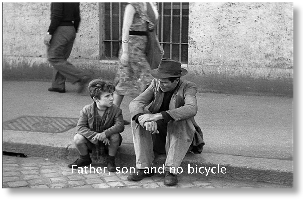
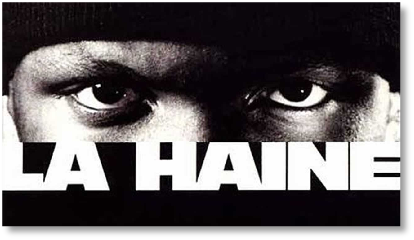
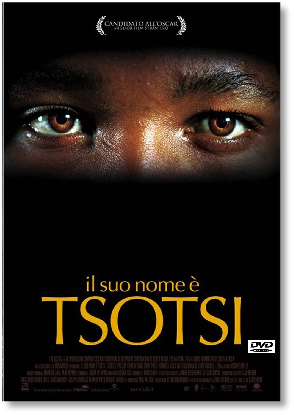
FM4: VARIETIES OF FILM EXPERIENCE –
ISSUES AND DEBATES
Focus of the unit:
This unit contributes to synoptic assessment.
Understanding will be fostered through:
*Studying complex films from different contexts, ext ending knowledge of the diversity of film and its effects
*exploring spectatorship issues in relation to a particular type of film
*applying key concepts and critical approaches gained throughout the course to explore one film in a synoptic manner .
Content Section A:
World Cinema This section requires a specific engagement with a World Cinema topic, including contextual knowledge.
There are prescribed topics but no prescribed films and questions will be broadly
-
The following options are available for first examination in Summer 2010 until the end date of this qualification .
(a) Aspects of a National Cinema Topics for examination are:
Bollywood , 1990 – present
Iranian Cinema , 1990 – present
Japanese Cinema, 1950 – 1970
Mexican Cinema, 1990 – present .
This study does not require a comprehensive coverage of the period – and it is permissible to cover a shorter period, as long as there is some significance in the films chosen and their relationship to the national cinema to which they belong. It is expected that two principal films will be chosen, supplemented by one or two further films that may have been studied more briefly. Each of the two principal films must be by a different direct or as this is not an auteur study.
The study should focus not only on the films themselves but on their contexts, exploring the viability of studying film by reference to the ' national ' .
( b) International Film Styles Topics for examination are:
German and/or Soviet Cinema of the 1920s
Surrealism
Neo -
New Waves .
This topic focuses on the characteristics of a film style which may have originated
in a particular national cinema as a ' movement ' and which subsequently has had
trans -
It is possible to focus on the initial moment, such as German Expressionism or Soviet
Montage in the 1920s or Italian Neo -
(c) Specialist Study 1: Urban Stories -
The expectation is that candidates will choose two principal films representing life in difficult urban environments, and that these will be supplemented by two further films studied more briefly. The challenge of this topic is to compare and contrast films which may come from very different social and cultural contexts. A list of suggested films is contained in the Notes for Guidance .
It is possible to consider historical examples such as Metropolis and Bicycle Thieves or largely contemporary examples such as Chungking Express , La Haine , Amores Perros , City of God and Tsotsi.
(d ) Specialist Study 2: Empowering Women The study of examples of films from World Cinema that engage with the empowering of women may be eclectic in its geographical range including, for example, Qui Ju , Real Women Have Curves , Five in the Afternoon , Moola a d é and Volver .
Alternatively, the focus may be on a p articular continental cinema, such as that of Africa or South America. The challenge of this topic is to compare and contrast films which may come from very different social and cultural contexts. A list of suggested films is contained in the Notes for Guidance .
Section B: Spectatorship Topics
The emphasis in all four options for Section B is on the study of the interaction of aspects of film form and the spectator. It offers continuity from work in F M 1.
The following options are available for first examination in Summer 2010 until the end date of this qualification .
(a ) Spectatorship and Early Cinema before 1917 The study of the development of film
language and spectatorship in the years between 1895 and the first full length feature
films – including consideration of how and why film form and spectatorship developed
as they did. The focus may be on a number of very short films from the period 1895
– 1905 or on two feature -
(b ) Spectatorship and Documentary The study of the impact on the spectator of different kinds of documentary – for example, the overtly persuasive and the apparently observational film . Examples may be taken from both historical (such as 30s and 40s British Documentary or 60s Cinéma Verité) and contemporary examples, including work on video.
A minimum of two feature -
(c ) Spectatorship: Experimental and Expanded Film/Video
The study of radical ' alternatives ' to mainstream film form and representation,
challenging our sense of how we see and consequently how we respond to audio -
(d ) Spectatorship: Popular Film and Emotional Response
This study is concerned with the ways in which popular film (whether deriving from
Hollywood or elsewhere) produces powerful sensory and emotional responses in the
spectator. It is possible to focus on a particular genre – such as horror and consider
shock effects – or the melodrama as ' weepie ' . Alternatively, the focus may be
on spectacle, whether relating to the body of the star or to the staging/choreograph
y of action. This topic is not concerned specifically with either issues of representation
or value judgements but rather with developing understanding about how films create
the emotional responses they do. It is expected that a minimum of two feature -
Section C: Single Film -
The ability of candidates to engage in critical study of a single film is examined in this section. The synoptic dimension is clear – as there is the expectation that the candidate ' s cumulative learning will be brought to bear in this study .
Critical approaches that may be applied include those arising from the frameworks for the FM3 research project while contextual study will consolidate work completed for FM2 and FM4 Section s A and B.
The role of macro and micro elements of film in the construction of meaning and the creation of emotion informs the specification as a whole. Each of the films available for study has given rise to much debate in its critical reception and each lends itself to study within one or more of the critical frameworks listed for FM3.
A consideration of some of these debates and the application of critical frameworks will provide the basis for the candidate ' s own engagement with the film.






